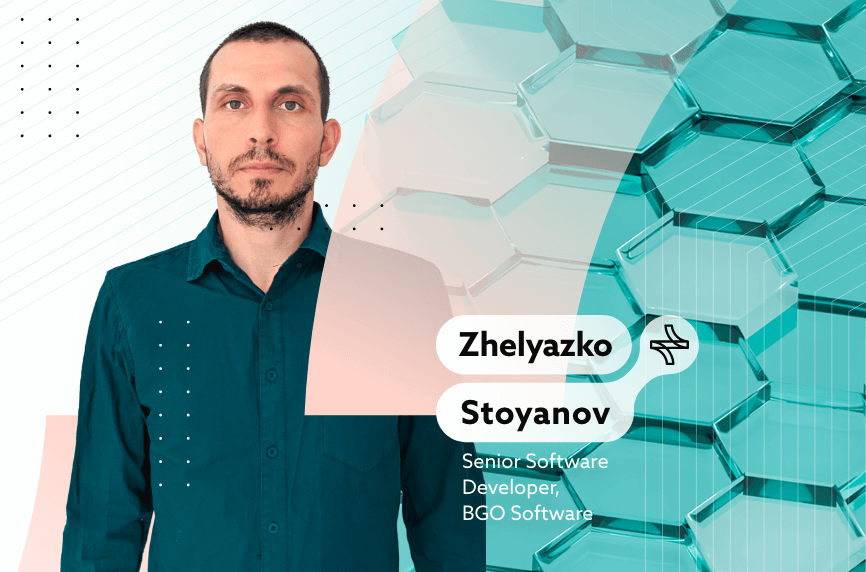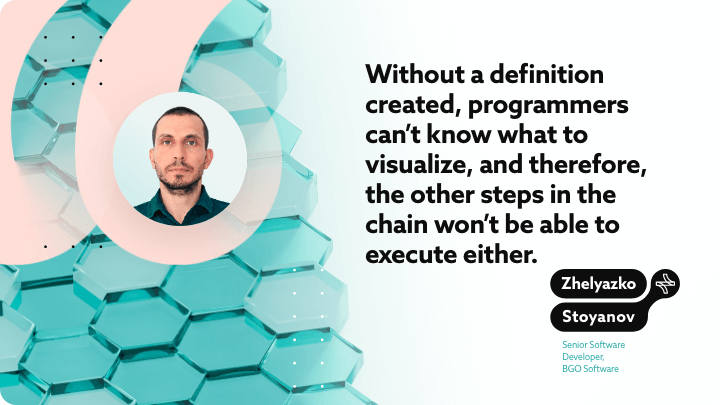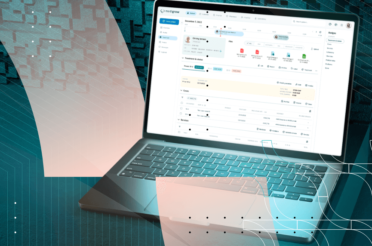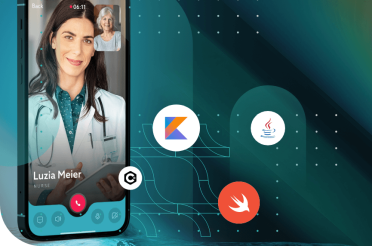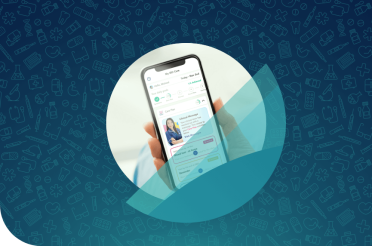Clinical data management and capture are critical in the effectiveness and precision of patient care in today’s healthcare system. Clinical data entry systems are essential to guarantee medical professionals instant access to complete and correct patient records.
These solutions improve workflows, reduce human error, and integrate easily with other healthcare platforms to help physicians make timely, educated decisions. Data analysis and reporting quality have also increased thanks to these platforms, which are essential for improving patient outcomes, operational efficiency, and regulatory compliance.
The topic of clinical data entry systems is pervasive and often complex to explain. With the help of expert Zhelyazko Stoyanov, we will guide you through some of the subtleties of this type of healthcare software.
What are clinical data entry systems?
Healthcare workers employ clinical data entry systems, or CDES, for managing and documenting patient data, medical records, and treatment plans. By streamlining the process of recording clinical data, these technologies enhance accessibility, efficiency, and accuracy in healthcare environments.
One of the first things to remember is that this type of management system can be built from many other subsystems developed by different companies working together according to a certain standard.
The BGO software team, of which Zhelyazko is a part, is developing an eRequisition subsystem. It receives information files called JSON files from the study definition system. These files contain data on the appearance and definition of digital forms that doctors and medical professionals will use in the future.
However, different medical staff need forms with varying types of information depending on their department. For example, an orthopedist will require information about a patient other than that of an oncologist. The role of the definition from the JSON files comes here. It defines the form’s fields and what will be used for easier categorization and cataloging.
Specifics of the eRequisition and workflow
Programmers create entries called E-Requisitions to specific unique accession numbers tied to particular definitions.
When an eRequisition is created, a given Entry will always be associated with a specific form. The positive thing in this case is that these forms are allocated to separate projects. The forms may change over time, but the E-Requisition where the data is entered will remain the same as when the form was initially created. Forms are filled out, and different fields can be made to create a template. Fields can be for patient names, years, test results, etc.
There are several different projects with separate functions, one responsible for creating and activating the templates.
This is embedded in the logic of the software, and what the average user sees is:
- First-stage user, receiving drafts with created forms. Users such as medical professionals should check that everything on the template is neat and suitable for use and that it meets the information requirements of the given topic. It is important to note that this user has maintained the same integrity of the form. Once the template is approved, it is activated and ready for use. This also initiates eRequisitions, which works with this template to enter the information into the template.
- The next stage is the so-called side user, a user with already created study cards for individual projects who can enter accession numbers if there are no requisitions to add ones where he can save patient data.
Therefore, companies must build their vision for the project well and research the technologies and the market at a reasonable level to convey their requirements correctly and concisely. The expert from BGO has observed that companies with more experience in the field have understood this golden rule and applied it. Now, start-ups sometimes need to pay more attention to preliminary planning and research.
Designing a validated clinical data entry system
Stakeholder consultation is the first step in a thorough plan to successfully switch clinical trials from paper-based to digital requisitions.
This method involves involving essential stakeholders such as clinical staff, IT specialists, and regulatory experts to identify system requirements and prioritize needs. Their advice helps design a system that satisfies requirements for both compliance and operation.
Several stages of data validation must be met according to company requirements and standards:
- Front-end validation by the browser: For example, if a text field has a volume of up to 500 words, the user cannot exceed this number.
- Back end validation: Refers to system logic and data transfer. In this case, if the number of information is exceeded, the API will initiate the error, sending an informed message to the client and the system developers.
- DataBase constrain: Received when duplicating records or design inquiries
“When data validation goes through all these stages, it is unlikely that unwanted or incorrect information will be recorded in the database.”
Using a user-centered design approach is the next stage. Here, the emphasis is on improving usability while creating interfaces that closely resemble the recognizable paper system flow. The intention is to lower end-users’ learning curve by offering a smooth, user-friendly interface that boosts productivity without interfering with current operations.
Validation of the system and compliance are important factors, especially in the highly regulated clinical trial setting. Good Clinical Practice (GCP) and FDA 21 CFR Part 11 requirements about electronic signatures and records must be complied with by the system. Strict testing is carried out to guarantee compliance with all legal requirements, protecting the security and integrity of data.
After that, iteration and pilot testing are carried out at particular locations. These pilot projects allow gathering preliminary input from actual users in a supervised setting. Before the system is widely deployed, the input is utilized to improve and optimize it to resolve potential problems.
Ultimately, a comprehensive program for onboarding and training is created. Clinical staff members receive extensive training materials and workshops to acquaint them with the system. Furthermore, continuous support channels are set up to assist users with the shift to the new system, guaranteeing they can use it immediately and effectively.
Implementation challenges and strategic approaches
There are different statuses in the life cycle of such a system for eRequisitions. Before a requisition is assigned a ready status and passed on to the next system, it is validated by checking that all data is entered correctly and checking for gaps. This guarantees that everything needed as information for the following departments is obtained.
When the time comes for submission, and it is found that there is a comment to fix or introduce some requirement at a later stage, this is checked by particular third-party users who monitor what needs to be reviewed, decide whether to change the status of the data without changing the data in any way. They serve as additional control and validation and forward the data along the chain.
“Based on similar private cases, it is understood how the given requisition will continue along the chain.“
According to the BGO expert, a new status is entered after the information has been transmitted. It works with another application that runs constantly in a loop and looks for a specific type of entries that have been checked and submitted.
Then, the system collects all the data that has been entered and builds a model that the client company’s system is familiar with, which meets the requirements of the agreement between the companies. After submitting the model, the other company will validate the data. It is possible to find errors that need to be corrected.
Stoyanov gave an example of a similar error with the difference in time zones. He said that eRequisitions could be sent from a one-time zone at a time that is future for a company in another time zone, resulting in a Future DateTime Error. A solution to this problem was found by forming a new queue of similar eRequisitions and delaying them until the specified time in the correct time zone.
Other error cases can occur from duplicate accessions in the system. One of the most challenging hurdles is the wide variety of statuses an eRequisition can fall into and what follows. There is difficulty in predicting and defining all the different cases clearly. Many of these cases are determined only after they occur because such a deviation was not foreseen initially.
Feedback loop and system optimization post-deployment
After receiving the data from the client company and approving it, feedback is returned to the developers. It tells if everything is okay or if errors need to be corrected. The information is forwarded to the UI for further processing.
A robust feedback loop is necessary for the system to continuously improve. The first step is setting up official channels for user input, like focus groups, surveys, and help desk support, where users may report problems and make upgrade suggestions. These insights help the system stay sensitive to the demands of the real world.
This is enhanced by data-driven optimization, which analyzes error reports and system usage statistics to pinpoint areas for backend performance and user interface design enhancements. In order to keep the system optimized and in line with changing user needs, regular upgrades and training are also essential. These are implemented based on feedback gathered and software changes.
Discover how we can help outsource Healthcare projects efficiently Speak to an expert today, and see how our on-demand IT talent and augmented teams can efficiently deliver value at every step of your roadmap.

Operational benefits of the new digital requisition system
Before the construction of the eRequisition system, the client company had to process information from paper documents, prepare forms, and enter information into them. With all this information processed by hand, human error is also possible.
Moving to a digital requisition system results in significant gains in speed, accuracy, and overall productivity. Human errors like typos and misreading handwriting, common in manual transcribing, are reduced automatically when data entry is done. As a result, there are fewer inconsistencies during audits and more precise data. Real-time data collection and processing speed up findings availability, which in turn accelerates study timeframes and decision-making.
Additionally, there are fewer site searches thanks to the digital approach. There are far fewer back-and-forth questions when forms are organized clearly and automatically check for inconsistent or missing data. By streamlining processes, research sites, and coordinators can concentrate more on patient care and the successful completion of studies.
Enhancing global clinical operations and protocol compliance
Concerning the regulations from official health organizations, the JSON files contain information about exactly how a form should look and what data it should contain, and the modeling takes place to meet all the requirements from the regulators.
The new system guarantees protocol compliance in multiple ways and facilitates improved worldwide collaboration. It makes it easier for sites to capture data consistently, ensuring that all locations—regardless of location—follow the same procedures and employ the same data input techniques.
“The existing software has documentation in which the technologies and the way of working with the system are embedded, with which the new system developers become familiar.”
Stoyanov explains that this consistency lowers variability and improves trial-to-trial data reliability. Better oversight is also made possible by enhanced monitoring and reporting by real-time data availability. This promotes stringent adherence to clinical protocols and early detection of violations.
Another significant benefit of the system is its scalability for multinational trials. It is made to manage massive data volumes in a variety of regulatory contexts, simplifying processes and guaranteeing seamless collaboration on an international level.
Deliver a world-class Healthcare project–with high-skilled, seamlessly integrated IT talent Learn how from our consultants. We work with clients worldwide.
Future directions in digital data management for clinical trials
Emerging technologies will probably influence how digital data management in clinical trials is done in the future. With the ability to provide automatic mistake detection and predictive analytics that can identify problems before they affect the study, artificial intelligence (AI) is set to take the lead role.
Blockchain technology offers unparalleled transparency and data integrity, guaranteeing that every record is traceable and impenetrable, potentially revolutionizing the way clinical data is validated and kept. There are also excellent functionalities; for example, entering a field with a patient number fills all other fields related to demographics.
“Of course, we have to keep up with technology nowadays. AI and Machine learning can be beneficial. Still, we need to ask ourselves if they would be needed in any system, especially one as complex as a Clinical Data Entry System. If there’s no need for a tool, or it slows down some other key system function, it doesn’t need to be added just because it’s trendy.“
Zhelyazko also believes that it is still about the data of millions of people, and regardless of how useful AI is, we should not rely solely on it. It is also possible for AI to make mistakes, and it is the responsibility of medical professionals and software developers to watch for such irregularities as experts are competent enough to do so.
To wrap things up, a significant development in clinical trial management is creating and implementing a digital clinical data input system. These solutions are poised to propel more effective, compliant, and scalable global clinical operations by tackling operational issues, improving data quality, and embracing future technology.
Sources
- Interview with the BGO expert Zhelyazko Stoyanov – Clinical Data Entry Systems
- Clinical data entry – https://www.ncbi.nlm.nih.gov/pmc/articles/PMC2232146/









